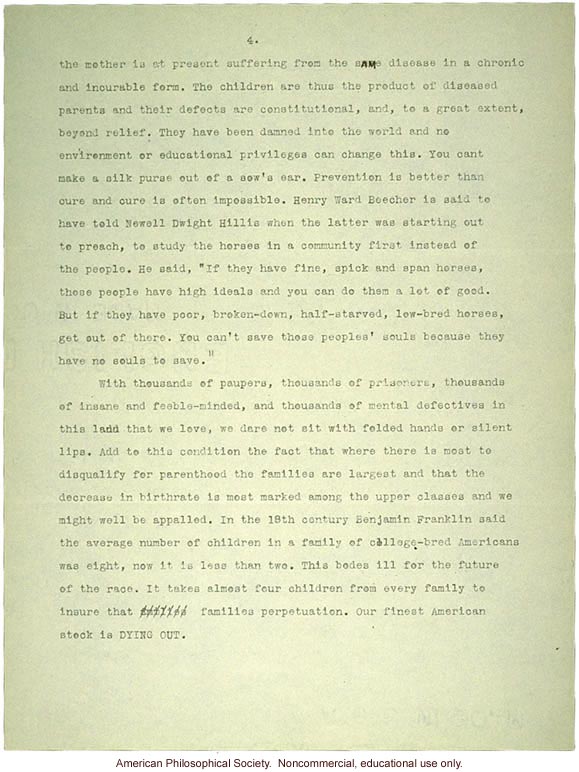[page number] 4. [end page number]
the mother is at present suffering from the same disease in a chronic and incurable form. The children are thus the product of diseased parents and their defects are constitutional, and, to a great extent, beyond relief. They have been damned into the world and no environment or educational privileges can change this. You cant make a silk purse out of a sow's ear. Prevention is better than cure and cure is often impossible. Henry Ward Beecher is said to have told Newell Dwight Hillis when the latter was starting out to preach, to study the horses in the community first instead of the people. He said, "If they have fine, spick and span horses, these people have high ideals and you can do them a lot of good. But if they have poor, broken-down, half-starved, low-bred horses, get out of there. You can't save these peoples' souls because they have no souls to save."
With thousands of paupers, thousands of prisoners, thousands of insane and feeble-minded, and thousands of mental defectives in this land that we love, we dare not sit with folded hands or silent lips. Add to this condition the fact that where there is most to disqualify for parenthood the families are largest and that the decrease in birthrate is most marked among the upper classes and we might well be appalled. In the 18th century Benjamin Franklin said the average number of children in a family of college-bred Americans was eight, now it is less than two. This bodes ill for the future of the race. It takes almost four children from every family to insure that families perpetuation. Our finest American stock is DYING OUT.


